Abstract
BACKGROUND--In the day to day care of obstructive airways diseases (asthma and chronic obstructive pulmonary disease) important decisions such as disease classification and choice of therapy are based on assessment of the bronchodilator response. However, surprisingly little is known of the long term course of the bronchodilator response in patients with obstructive airways disease. METHODS--Data from a multicentre trial were used in which 274 patients aged 18-60 years with airways obstruction were selected with PC20 < 8 mg/ml and FEV1 < 95% CI of predicted. FEV1 was measured before and 20 minutes after 1000 micrograms terbutaline and 40 minutes after an additional 80 micrograms ipratropium bromide. Data were analysed from 185 patients who were followed up for 21 months (five measurements). Four different expressions of bronchodilator response (BDR) were examined for change under long term therapy, long term variability, and prognostic value in predicting response to inhaled corticosteroids. RESULTS--There was a significant reduction in BDR of 117 ml after three months of treatment with a beta 2 agonist plus a corticosteroid (BA + CS), but not after bronchodilators only. Significant reductions with BA + CS were also found in BDR as a percentage of initial FEV1, and in BDR as a percentage of predicted FEV1. Bronchodilator tests were quite variable (SD 186 ml or 11% of initial value) and less than half of the patients could consistently be classified as "irreversible" with recommended cutoff levels. The bronchodilator response at the start of the study proved to be a poor predictor of improvement in FEV1 under BA + CS treatment (correct prediction 60%). CONCLUSIONS--Bronchodilator responses decrease substantially with inhaled corticosteroid therapy, and within subject variability is considerable both in asthma and chronic obstructive pulmonary disease. Dichotomous decisions on whether patients are "irreversible" according to any single bronchodilator measurement should therefore be made with great caution. The bronchodilator response cannot be used accurately as a predictor of response to inhaled corticosteroids in obstructive airways disease.
Full text
PDF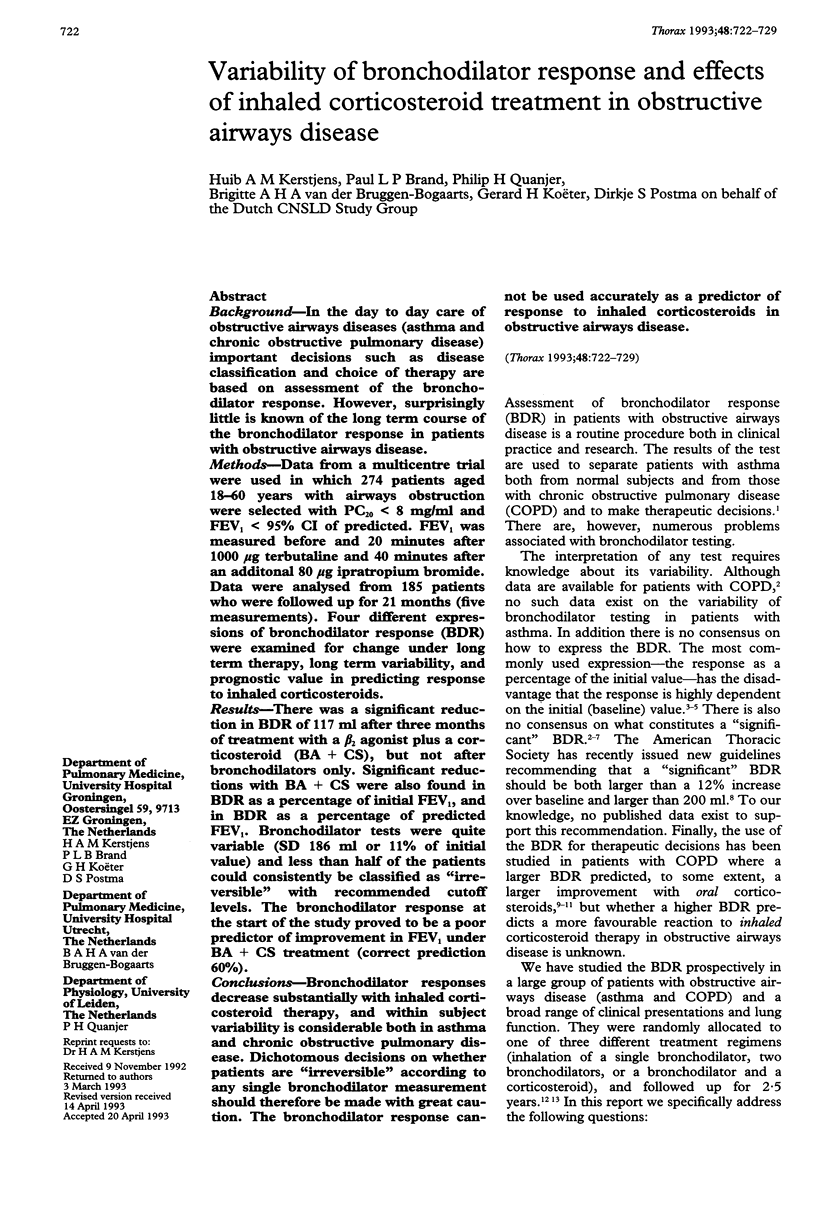
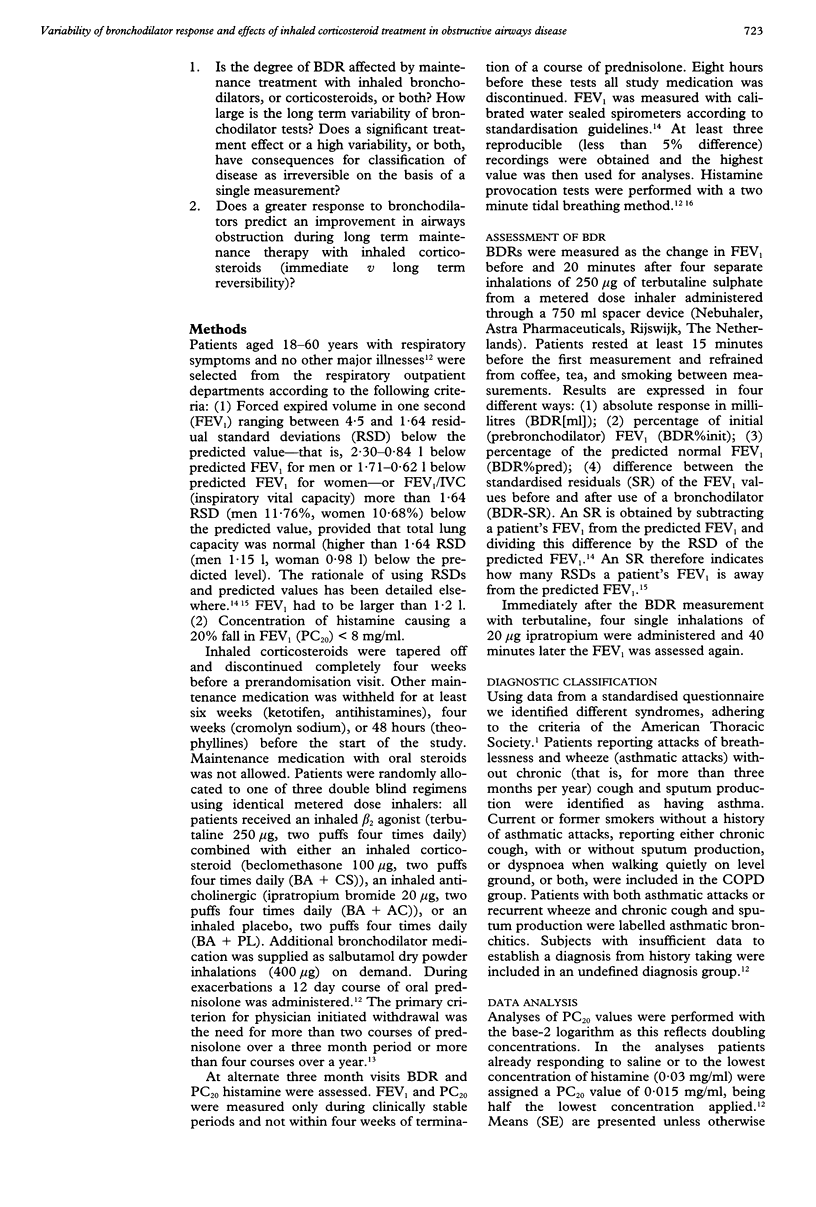
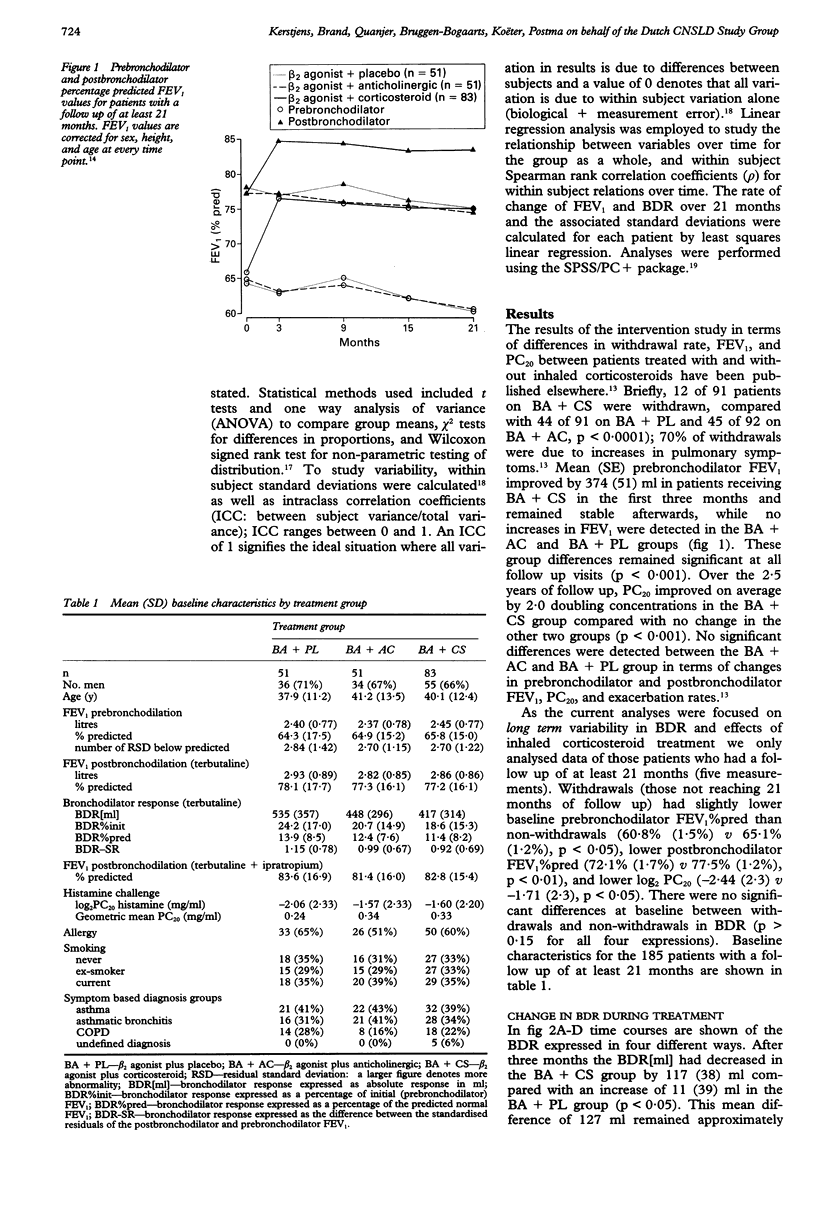
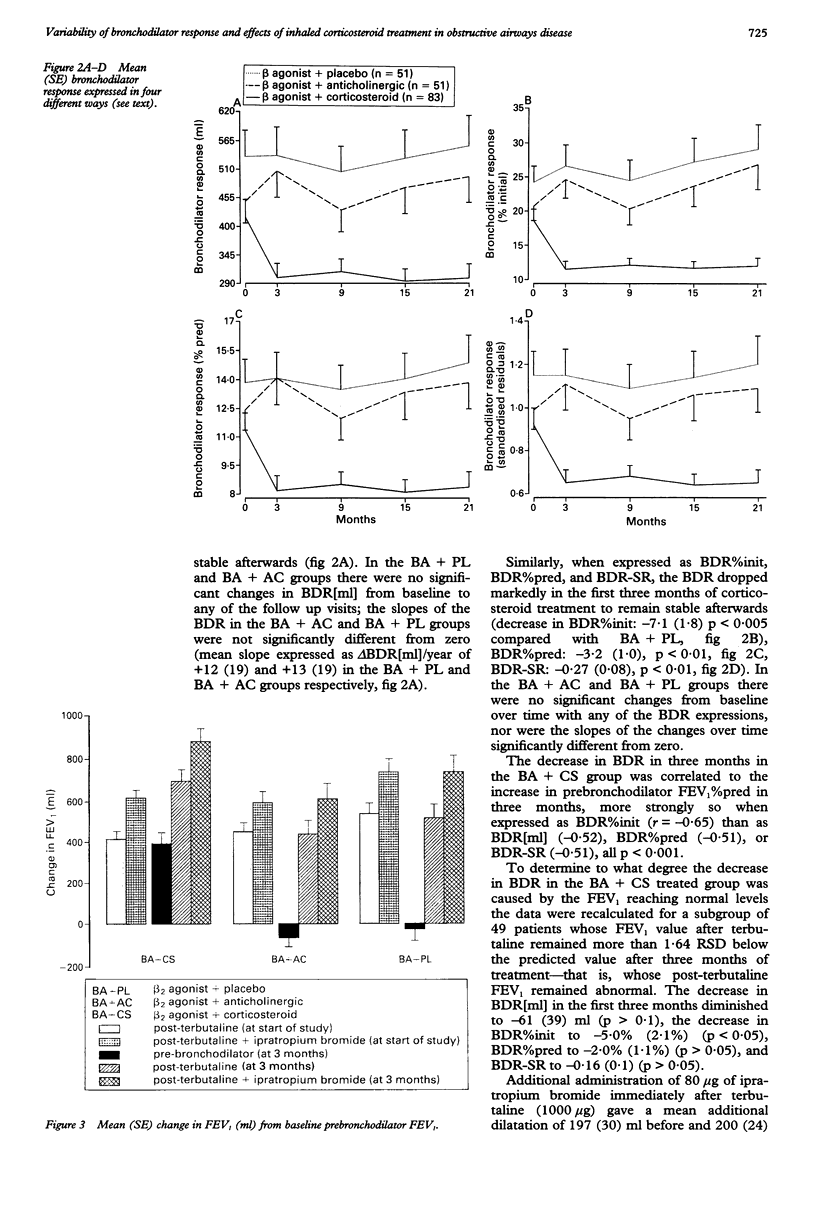
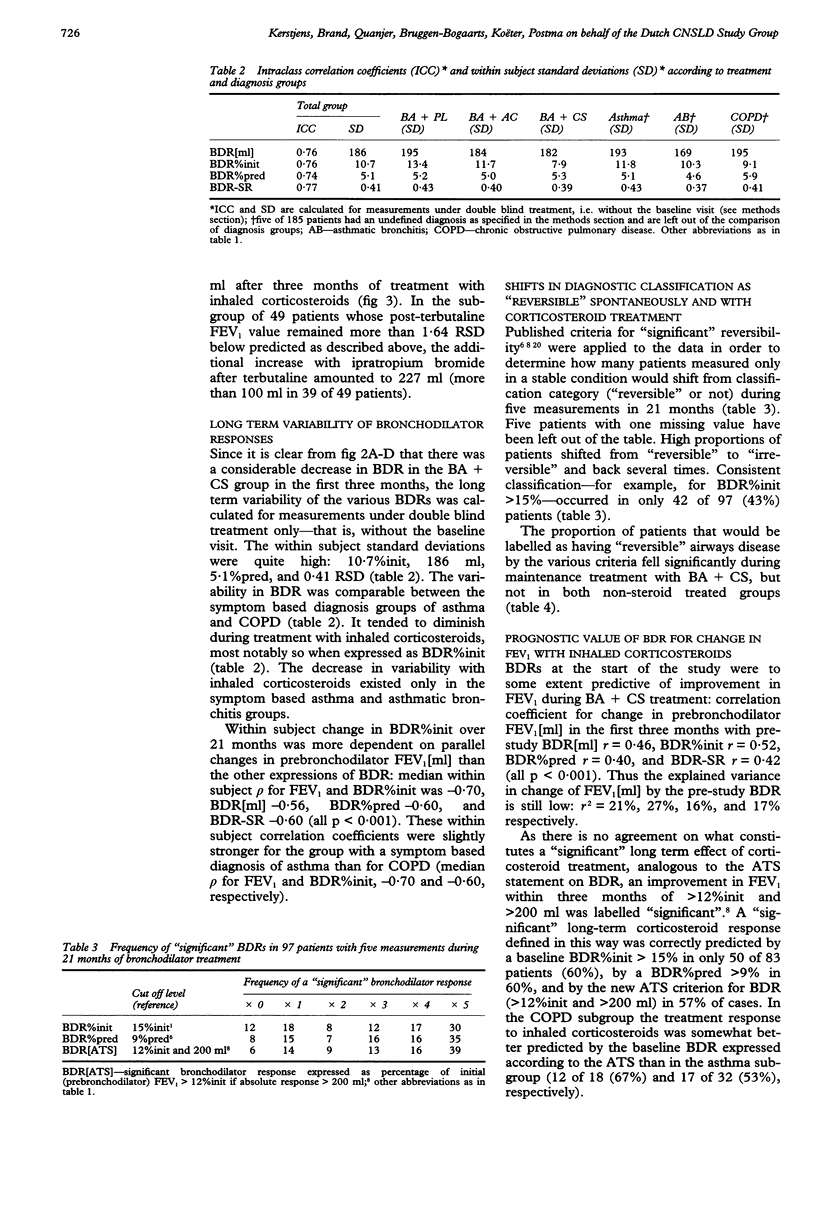
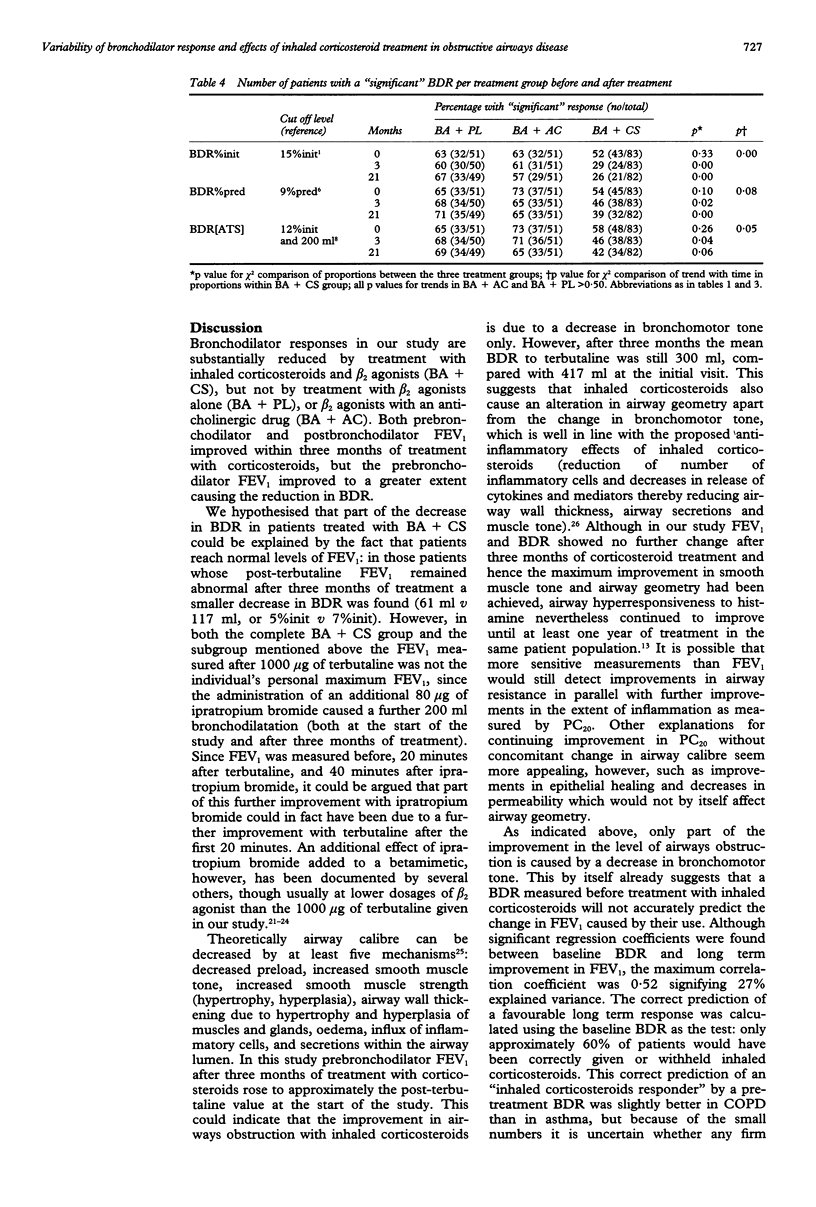
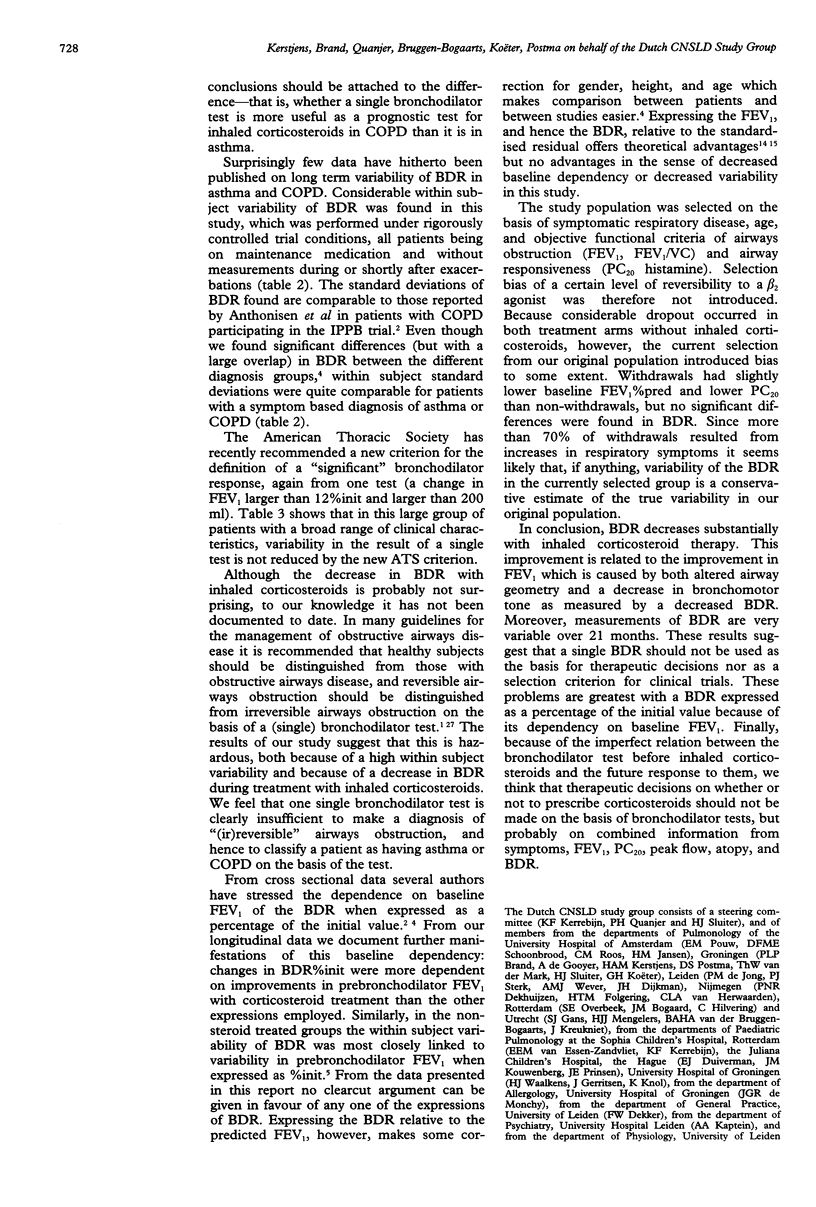
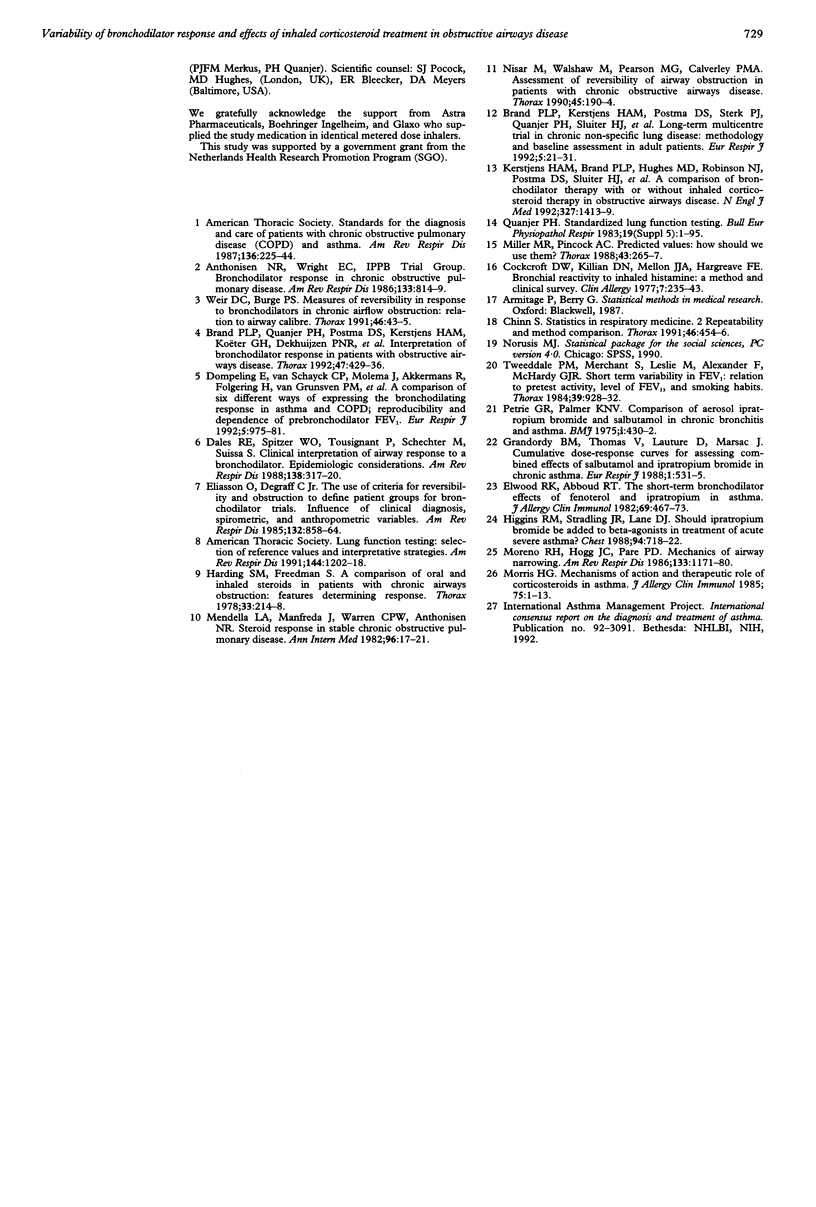
Images in this article
Selected References
These references are in PubMed. This may not be the complete list of references from this article.
- Anthonisen N. R., Wright E. C. Bronchodilator response in chronic obstructive pulmonary disease. Am Rev Respir Dis. 1986 May;133(5):814–819. [PubMed] [Google Scholar]
- Brand P. L., Kerstjens H. A., Postma D. S., Sterk P. J., Quanjer P. H., Sluiter H. J., Dijkman J. H., van Herwaarden C. L., Hilvering C., Jansen H. M. Long-term multicentre trial in chronic nonspecific lung disease: methodology and baseline assessment in adult patients. Dutch CNSLD Study Group. Eur Respir J. 1992 Jan;5(1):21–31. [PubMed] [Google Scholar]
- Brand P. L., Quanjer P. H., Postma D. S., Kerstjens H. A., Koëter G. H., Dekhuijzen P. N., Sluiter H. J. Interpretation of bronchodilator response in patients with obstructive airways disease. The Dutch Chronic Non-Specific Lung Disease (CNSLD) Study Group. Thorax. 1992 Jun;47(6):429–436. doi: 10.1136/thx.47.6.429. [DOI] [PMC free article] [PubMed] [Google Scholar]
- Chinn S. Statistics in respiratory medicine. 2. Repeatability and method comparison. Thorax. 1991 Jun;46(6):454–456. doi: 10.1136/thx.46.6.454. [DOI] [PMC free article] [PubMed] [Google Scholar]
- Cockcroft D. W., Killian D. N., Mellon J. J., Hargreave F. E. Bronchial reactivity to inhaled histamine: a method and clinical survey. Clin Allergy. 1977 May;7(3):235–243. doi: 10.1111/j.1365-2222.1977.tb01448.x. [DOI] [PubMed] [Google Scholar]
- Dales R. E., Spitzer W. O., Tousignant P., Schechter M., Suissa S. Clinical interpretation of airway response to a bronchodilator. Epidemiologic considerations. Am Rev Respir Dis. 1988 Aug;138(2):317–320. doi: 10.1164/ajrccm/138.2.317. [DOI] [PubMed] [Google Scholar]
- Dompeling E., van Schayck C. P., Molema J., Akkermans R., Folgering H., van Grunsven P. M., van Weel C. A comparison of six different ways of expressing the bronchodilating response in asthma and COPD; reproducibility and dependence of prebronchodilator FEV1. Eur Respir J. 1992 Sep;5(8):975–981. [PubMed] [Google Scholar]
- Eliasson O., Degraff A. C., Jr The use of criteria for reversibility and obstruction to define patient groups for bronchodilator trials. Influence of clinical diagnosis, spirometric, and anthropometric variables. Am Rev Respir Dis. 1985 Oct;132(4):858–864. doi: 10.1164/arrd.1985.132.4.858. [DOI] [PubMed] [Google Scholar]
- Elwood R. K., Abboud R. T. The short-term bronchodilator effects of fenoterol and ipratropium in asthma. J Allergy Clin Immunol. 1982 May;69(5):467–473. doi: 10.1016/0091-6749(82)90123-3. [DOI] [PubMed] [Google Scholar]
- Grandordy B. M., Thomas V., de Lauture D., Marsac J. Cumulative dose-response curves for assessing combined effects of salbutamol and ipratropium bromide in chronic asthma. Eur Respir J. 1988 Jun;1(6):531–535. [PubMed] [Google Scholar]
- Harding S. M., Freedman S. A comparison of oral and inhaled steroids in patients with chronic airways obstruction: features determining response. Thorax. 1978 Apr;33(2):214–218. doi: 10.1136/thx.33.2.214. [DOI] [PMC free article] [PubMed] [Google Scholar]
- Higgins R. M., Stradling J. R., Lane D. J. Should ipratropium bromide be added to beta-agonists in treatment of acute severe asthma? Chest. 1988 Oct;94(4):718–722. doi: 10.1378/chest.94.4.718. [DOI] [PubMed] [Google Scholar]
- Kerstjens H. A., Brand P. L., Hughes M. D., Robinson N. J., Postma D. S., Sluiter H. J., Bleecker E. R., Dekhuijzen P. N., de Jong P. M., Mengelers H. J. A comparison of bronchodilator therapy with or without inhaled corticosteroid therapy for obstructive airways disease. Dutch Chronic Non-Specific Lung Disease Study Group. N Engl J Med. 1992 Nov 12;327(20):1413–1419. doi: 10.1056/NEJM199211123272003. [DOI] [PubMed] [Google Scholar]
- Mendella L. A., Manfreda J., Warren C. P., Anthonisen N. R. Steroid response in stable chronic obstructive pulmonary disease. Ann Intern Med. 1982 Jan;96(1):17–21. doi: 10.7326/0003-4819-96-1-17. [DOI] [PubMed] [Google Scholar]
- Miller M. R., Pincock A. C. Predicted values: how should we use them? Thorax. 1988 Apr;43(4):265–267. doi: 10.1136/thx.43.4.265. [DOI] [PMC free article] [PubMed] [Google Scholar]
- Moreno R. H., Hogg J. C., Paré P. D. Mechanics of airway narrowing. Am Rev Respir Dis. 1986 Jun;133(6):1171–1180. doi: 10.1164/arrd.1986.133.6.1171. [DOI] [PubMed] [Google Scholar]
- Morris H. G. Mechanisms of action and therapeutic role of corticosteroids in asthma. J Allergy Clin Immunol. 1985 Jan;75(1 Pt 1):1–13. doi: 10.1016/0091-6749(85)90002-8. [DOI] [PubMed] [Google Scholar]
- Nisar M., Walshaw M., Earis J. E., Pearson M. G., Calverley P. M. Assessment of reversibility of airway obstruction in patients with chronic obstructive airways disease. Thorax. 1990 Mar;45(3):190–194. doi: 10.1136/thx.45.3.190. [DOI] [PMC free article] [PubMed] [Google Scholar]
- Petrie G. R., Palmer K. N. Comparison of aerosol ipratropium bromide and salbutamol in chronic bronchitis and asthma. Br Med J. 1975 Feb 22;1(5955):430–432. doi: 10.1136/bmj.1.5955.430. [DOI] [PMC free article] [PubMed] [Google Scholar]
- Tweeddale P. M., Merchant S., Leslie M., Alexander F., McHardy G. J. Short term variability in FEV1: relation to pretest activity, level of FEV1, and smoking habits. Thorax. 1984 Dec;39(12):928–932. doi: 10.1136/thx.39.12.928. [DOI] [PMC free article] [PubMed] [Google Scholar]
- Weir D. C., Sherwood Burge P. Measures of reversibility in response to bronchodilators in chronic airflow obstruction: relation to airway calibre. Thorax. 1991 Jan;46(1):43–45. doi: 10.1136/thx.46.1.43. [DOI] [PMC free article] [PubMed] [Google Scholar]



